Moreno Valley, CA Pollen and Allergy Report for Summer 2023
Pollen Allergy Trends in Moreno Valley, CA
When is pollen lowest in Moreno Valley, CA?

February
Lowest month total PPM
Avg. PPM
When is pollen highest in Moreno Valley, CA?

March
Highest month total PPM
Avg. PPM
How does pollen in Moreno Valley, CA compare to California?
Moreno Valley has a lower average PPM than the state of California.
Moreno Valley yearly avg PPM:
California yearly avg PPM:
How does pollen in Moreno Valley, CA compare to the USA?
Moreno Valley has a lower average PPM than the USA.
Moreno Valley yearly avg PPM:
USA yearly avg PPM:
Is pollen worse this year in Moreno Valley, CA?
Spring 2023 was better than spring 2022.
Spring 2023 PPM:
Spring 2022 PPM:
Average PPM in Moreno Valley, CA
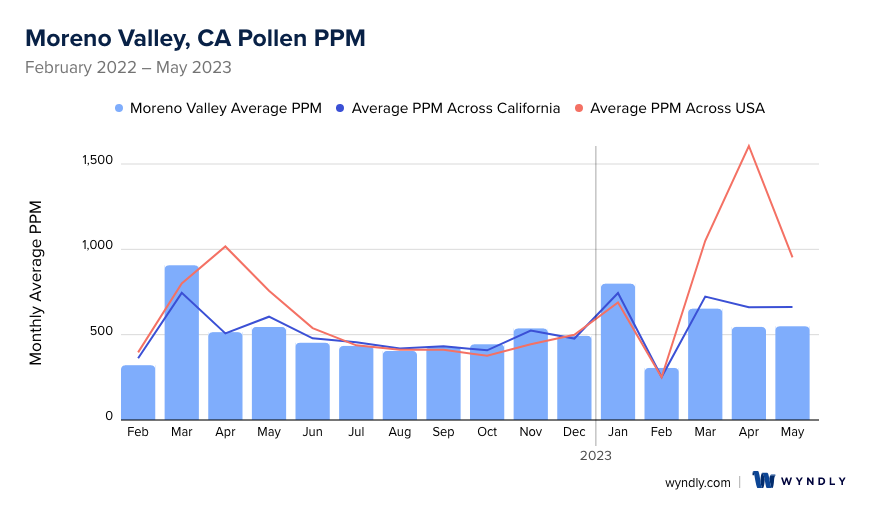

Moreno Valley, CA Pollen and Allergy Breakdown by Month
Grass
When is grass pollen highest in Moreno Valley, CA?
May has the highest grass pollen in Moreno Valley, CA with an average PPM of
When is grass pollen lowest in Moreno Valley, CA?
December has the lowest grass pollen in Moreno Valley, CA with an average PPM of
Tree
When is tree pollen highest in Moreno Valley, CA?
March has the highest tree pollen in Moreno Valley, CA with an average PPM of
When is tree pollen lowest in Moreno Valley, CA?
August has the lowest tree pollen in Moreno Valley, CA with an average PPM of
Weed
When is weed pollen highest in Moreno Valley, CA?
November has the highest weed pollen in Moreno Valley, CA with an average PPM of
When is weed pollen lowest in Moreno Valley, CA?
February has the lowest weed pollen in Moreno Valley, CA with an average PPM of
Moreno Valley, CA Pollen Monthly Breakdown by Pollen Type
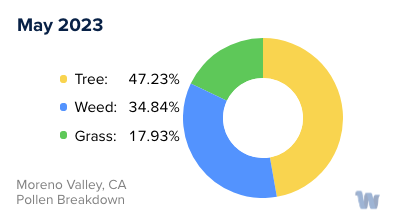
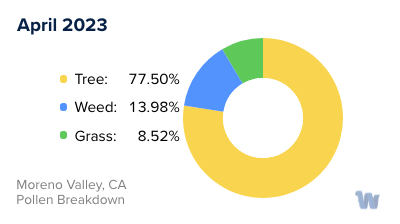
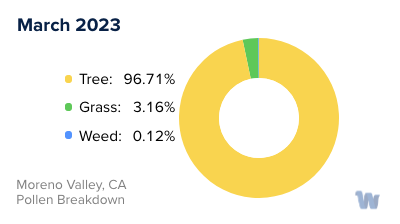
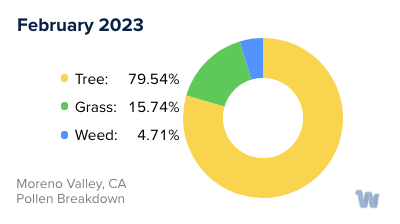

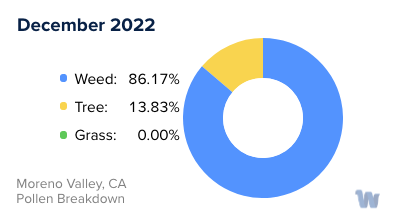
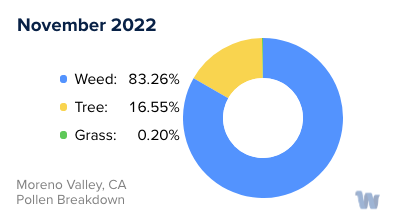
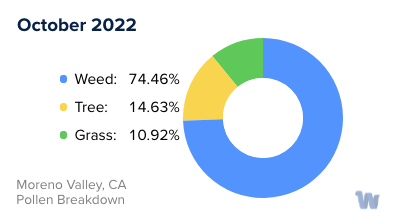
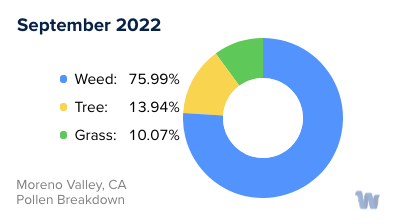
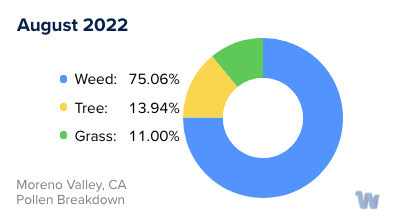
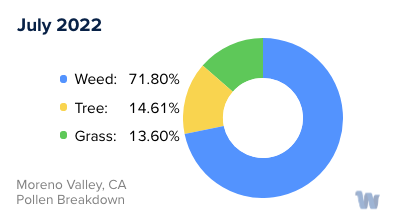
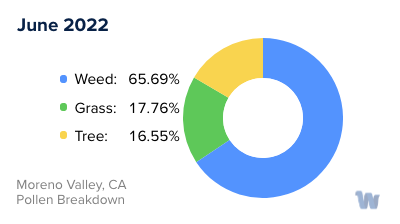
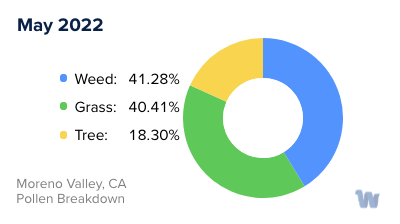
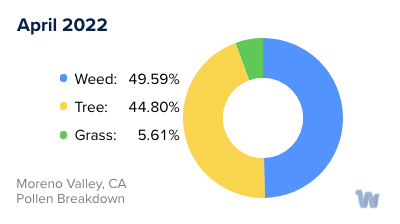
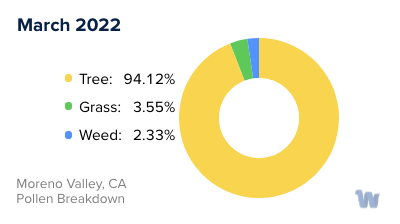
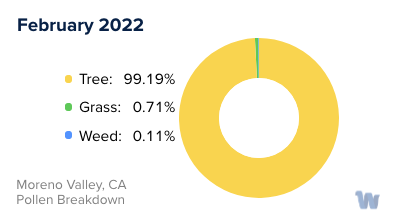
Pollen and Hay Fever in Moreno Valley, CA
Pollen allergies, often referred to as hay fever, are a common concern for many residents of Moreno Valley, California. As we delve into this topic, it's important to understand that pollen is a fine powder produced by various types of plants, including trees, grasses, and weeds. The types of pollen that often trigger allergic reactions vary by location and the local flora.
In Moreno Valley, the primary culprits of pollen allergies are trees such as oak, pine, and olive, grasses like Bermuda and ryegrass, and weeds such as ragweed and sagebrush. Each of these plants releases pollen into the air at different times of the year, leading to a fluctuating pollen count and varying allergy symptoms among the local population.
Tree pollen is usually the first to appear in the year. Oak and pine trees begin releasing their pollen as early as late winter, typically from February through May. Olive trees tend to release their pollen a bit later, usually from March to June.
Grass pollen follows, with Bermuda grass and ryegrass generally releasing their pollen in the late spring and early summer months. The grass pollen season can extend from May through August.
Weed pollen is typically the last to appear. Ragweed and sagebrush tend to release their pollen from late summer into fall, usually from August through November.
Of course, these are general timelines and may vary from year to year based on weather conditions and other environmental factors. For instance, a particularly warm winter may cause trees to release their pollen earlier than usual.
Living in Moreno Valley means experiencing the full spectrum of pollen allergies throughout the year. Understanding the cycles of local pollen release can help residents anticipate their allergies and manage their daily activities accordingly. This knowledge can play a vital role in maintaining a comfortable and healthy lifestyle in this beautiful city.

